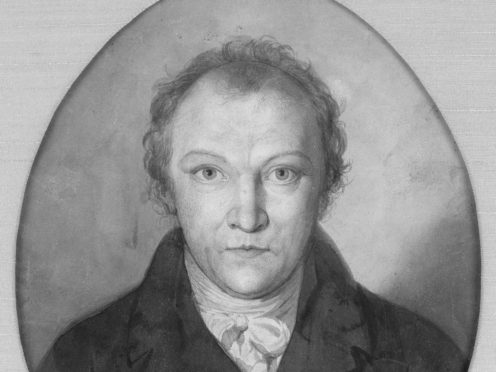A drawing thought to be William Blake’s only self-portrait is to go on show in Britain for the first time – in an exhibition which will also bring his wife out of the shadows.
Some 300 “remarkable and rarely seen works” will be displayed in what is expected to be a blockbuster show at Tate Britain.
The more than 200-year-old detailed pencil drawing has only been seen once before, in the US, and never in the British artist’s home country.
Depicting Blake when he was around 45 years old, it is thought to be the visionary artist and poet’s only self-portrait.
It shows an “isolated and misunderstood figure” who had returned to London from Sussex, where he had been falsely accused of treason.
Curator Martin Myrone said the “compelling” and “hugely revealing” image, which was sold to a private collection in the 1970s, was “probably a self-portrait”.

Experts believe it is by Blake because of “the kind of paper it’s on” and “technically” it is “very much like works” by the artist.
It will be shown alongside a sketch of Blake’s wife, Catherine, from around the same time.
Opening in the autumn, the exhibition aims to shed more light on Catherine’s influence on the radical poet.
As well as giving him practical assistance, she “became an unacknowledged hand in the production of his engravings and illuminated books”, Tate said.
Blake’s creativity was “dependent on the domestic stability of his life with Catherine” and his visual art and poetry reached new heights after their marriage in 1782.

Curator Amy Concannon said Catherine, who collaborated with Blake on his work, was an artist “in her own right” and “incredibly skilled as a printmaker” but her influence was “sidelined … quite early”.
“She was the keeper of the purse, the domestic finances, so it was really down to her that they never sunk too far down into poverty,” she said.
“She always kept some money hidden in the house; just in case he didn’t get any work in, there was always something.
“Every now and again she would present Blake with an empty dinner plate at dinner time in order to say ‘Buck your ideas up, get some more work’.
“She was important in lots of ways and we will not shy away from that.”

Blake struggled to be understood and appreciated during his lifetime but his work is now sought-after around the globe.
The exhibition will also re-stage Blake’s ill-fated exhibition of 1809, in which he put on a display of his work above his family’s London haberdashery and hosiery shop.
Tate will recreate the Georgian drawing room so exhibition-goers can encounter the paintings as visitors did.
Blake “retreated from the world and declared himself ‘hid’” after the exhibition, in which he was disappointed to have had no sales and only a handful of visitors.

The exhibition will also go some way in realising Blake’s unfulfilled ambition for his work to be seen on a giant scale on ancient palaces and churches.
The Spiritual Form Of Nelson Guiding Leviathan (1805-9) and The Spiritual Form Of Pitt Guiding Behemoth (1805) will be digitally enlarged and projected on to the gallery wall.
Other highlights will include Albion Rose, a “visualisation of the mythical founding of Britain” and a section on Blake’s illuminated books such as Songs Of Innocence And Of Experience.
William Blake, described as the largest survey of work by the artist, runs at Tate Britain from September 11 2019 to February 2 2020.
